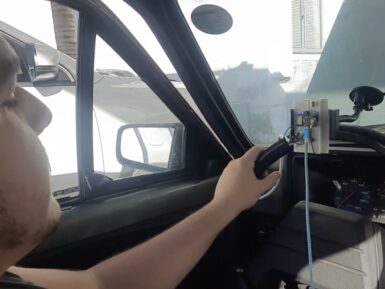
Overview
The kit includes three antennas:
- 2x cellular antennas suitable for 4G/3G/2G applications
- 1x active GNSS L1 ceramic antenna suitable for geolocalization and asset tracking applications
Cellular Antennas
Thanks to the integrated cable and connector, they are engineered to be easily mounted on the 4G Modules guaranteeing ground plane independence. In addition to 4G/LTE applications, they also support worldwide 3G/2G frequency bands, ideal for a wide range of IoT use projects.
GNSS Antenna
The antenna features an integrated LNA boasting a 16 dB gain, making it suitable for applications such as fleet management, navigation, RTK, and various asset tracking purposes. It is designed to be compatible with Arduino Pro 4G Module GNSS L1 radio technology.
List of Compatible Boards
This 4G Module Antennas kit is compatible with:
Tech specs
| Cellular Antennas | GNSS Antenna | |
| Frequency Bands (MHz) | 698–960, 1700–2700 | 1575–1602 |
| Technology | LTE (4G) | GNSS L1 (active) |
| Cable Length | 150 | 95 |
| Connector Type | IPEX I | IPEX MHF I |
| Mounting Type | Adhesive | Buckle |
| Dimensions (mm) | 96 x 21 | 15 x 15 x 6.2 |
Get Inspired

Combine the Alvik, Modulinos, Nano ESP32 and the Nicla Vision to create a robot that can respond to your greeting!

Shortly after attending a recent tinyML workshop in Sao Paolo, Brazil, Joao Vitor Freitas da Costa was looking for a way to incorporate some of the technologies and techniques he learned into a useful project. Given that he lives in an area which experiences elevated levels of pickpocketing and automotive theft, he turned his attention to a smart car security system. His solution to a potential break-in or theft of keys revolves around the incorporation of an Arduino Nicla Vision board running a facial recognition model that only allows the vehicle to start if the owner is sitting in the driver’s seat. The beginning of the image detection/processing loop involves grabbing the next image from the board’s camera and sending it to a classification model where it receives one of three labels: none, unknown, or Joao, the driver. Once the driver has been detected for 10 consecutive seconds, the Nicla Vision activates a relay in order to complete the car’s 12V battery circuit, at which point the vehicle can be started normally with the ignition. Through this project, da Costa was able to explore a practical application of vision models at-the-edge to make his friend’s car safer to use. To see how it works in more detail, you can check out the video below and delve into the tinyML workshop he attended here.





